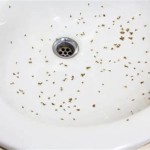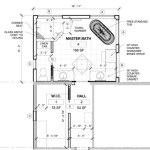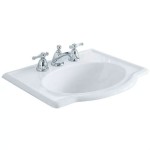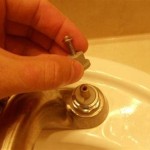How to Install Backsplash Behind Bathroom Sink
A bathroom backsplash serves both practical and aesthetic purposes. It protects the wall behind your sink from splashes and stains, while also adding a touch of style to your bathroom decor. Installing a backsplash is a relatively straightforward DIY project that can be completed in a weekend. This guide outlines the steps involved in installing a backsplash behind your bathroom sink, ensuring a professional and functional finish.
1. Planning and Preparation
Before starting, it's crucial to plan the project thoroughly. This involves selecting the right materials, measuring the area, and preparing the wall surface. *
Materials
: The most common backsplash materials for bathrooms include ceramic tiles, glass tiles, subway tiles, and natural stone. Consider factors like durability, moisture resistance, and aesthetics when choosing your material. *Measurements
: Accurately measure the area behind the sink, factoring in the height and width of the backsplash. This will also guide the purchase of tiles and grout. *Wall Preparation
: The wall surface must be clean, smooth, and free from any irregularities. If the wall is painted, use a primer to ensure the adhesive adheres properly. Clean the surface with a damp cloth and allow it to dry completely before proceeding.2. Installing the Backsplash
The installation process involves attaching the tiles to the wall using thin-set mortar. This step requires precision and patience. *
Applying Thin-set Mortar
: Use a notched trowel to apply thin-set mortar to the wall in a consistent layer. The size of the notches on the trowel should correspond to the size of the tiles. *Positioning the Tiles
: Start from a corner or a prominent point and carefully position the tiles, ensuring they are level and aligned. Leave a space between tiles for grout. *Spacing and Grouting
: Use tile spacers to maintain consistent gaps between tiles. Once the mortar has dried, remove the spacers and apply grout to fill these gaps. *Cleaning Excess Grout
: Clean excess grout with a damp sponge, wiping in a diagonal motion to avoid smearing. Allow the grout to cure completely before using the sink.3. Finishing Touches
After the grout has dried, there are a few final steps to ensure a perfect finish. *
Sealing the Grout
: Apply a grout sealer to protect the grout from stains and water damage. *Caulking
: Apply caulk to the edges of the backsplash where it meets the countertop and sink. This prevents water from seeping behind the tiles. *Cleaning
: Once the caulk has cured, clean the backsplash thoroughly with a damp cloth to remove any residue. *Adding Finishing Touches
: For an extra touch, consider adding decorative molding or trim around the backsplash.Installing a backsplash behind your bathroom sink is a rewarding DIY project that can enhance the functionality and aesthetics of your bathroom. Following these steps, you can achieve a professional-looking finish that will last for years to come.

How To Install A Tile Backsplash

Brilliant Bathroom Backsplash Ideas Family Handyman

Small Bathroom Remodel Easy Diy Tile Backsplash Engineer Your Space

How To Install Backsplash Bathroom Tile Easy Simple

Do You Need A Backsplash For Your Bathroom Vanity Diamond Kitchen Bath

Small Bathroom Remodel Easy Diy Tile Backsplash Engineer Your Space

Backsplash Advice For Your Bathroom Would You Tile The Side Walls Too Designed

A Bathroom Backsplash Is It Worth Installing On Your Vanity

Tutorial How To Install A Bathroom Vanity The Diy Playbook
Backsplash Advice For Your Bathroom Would You Tile The Side Walls Too Designed
Related Posts







